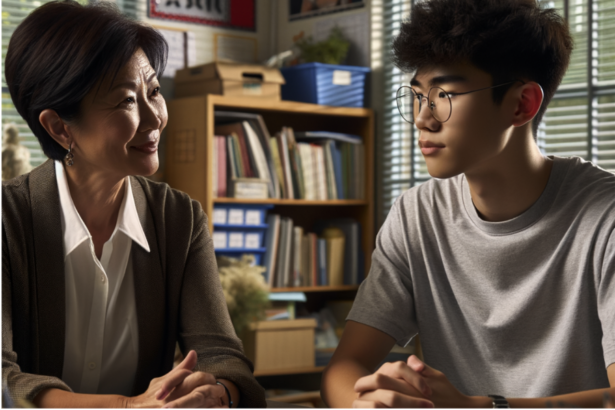By Sarah Bunney and Hannah Block
FocusFlo is an immersive VR game that boosts kids’ executive function through mindful, cross-body movements in a tranquil virtual space.
Visit FocusFlo Here – VR headset required
FocusFlo is an immersive VR game where users move clouds across a virtual space. Designed to engage children in slow, cross-body movements within a relaxing environment, FocusFlo promotes mindfulness while simultaneously strengthening executive functioning pathways. This is important to us, because mindfulness and Executive Functioning skills are essential for developmental success. According to our literature review, these types of MBIs can improve attention span, working memory, and emotional regulation, all essential components of children’s executive functioning. Our goal is to offer a short, daily practice that helps strengthen these cognitive pathways.
Background
Research on mindfulness-based interventions (MBIs) shows positive impacts on children’s executive functioning, specifically in areas like attention, working memory, and emotional regulation (SpringerLink MDPI). However, many mindfulness apps, like “Headspace for Kids,” focus on general mindfulness without specifically targeting executive function enhancement through gamified learning. Our product, FocusFlo, stands apart by directly integrating mindfulness practices with activities designed to measurably improve executive functioning in children.
Drawing inspiration from research on the impact of active video games (exergames) on executive functioning in children (MDPI BioMed Central), alongside studies on sensorimotor integration, we recognized how physical movement—especially cross-body movements—enhances neural plasticity, supporting cognitive functions crucial for learning and executive functioning (SpringerLink The Library of Congress). This evidence, combined with the growing acceptance of VR in learning environments, led us to ask: How can we leverage mindfulness practices to strengthen executive functioning in young children through an interactive and playful VR-based intervention?
Development Insights and Design Decisions
Throughout the development process, we encountered unexpected challenges with the technical aspects of VR. Initially, we doubted our ability to create a viable prototype due to technical barriers. However, we leveraged resources within the Harvard community, such as technology consultants and knowledgeable peers, and ultimately developed the game using Spatial for design, with Shapes XR to import elements into the platform.
Design trade-offs were frequent as we progressed. We initially envisioned a more complex environment with shape tracing, but given our constraints in Unity, a simpler cloud movement design aligned best with our resources. Additionally, we are mindful of VR use in children under 13, as prolonged exposure can pose risks to their developing vision. We anticipate advancements in VR technology that could offer safe, clear VR goggles suitable for younger users.
Next Steps and User Feedback
Our early product testing revealed enthusiastic responses from users who enjoyed the immersive world and engaging cross-body movements. Moving forward, we aim to enhance FocusFlo by adding sound effects, movement markers, rewards, and customization options. We also aspire to incorporate biometric feedback, allowing us to assess the game’s impact on physiological measures such as heart rate and stress levels.
By blending mindfulness with interactive technology, FocusFlo seeks to offer children a meaningful, enjoyable way to build essential executive functioning skills and enhance their overall well-being.
Visual Design Journey
The product started out as a simple scratch tracing game.
In a later iteration, we added a more in-depth and calming background, as well as some simple interactions like audio instructions.
We later met with a VR expert on Harvards campus who introduced us to a game development platform called unity. We worked to design a simple cloud tracing game that required players to cross their bodies to connect the clouds.
We then moved our game design into a platform called Spatial. Here we uploaded 3D clouds to our digital world, and started to develop code that would allow us to connect them like we imagined in unity.
After a round of user testing, we discovered that what users liked best about the game was the ability to move the clouds around. As such, we scrapped the idea of trying to connect the clouds with lines, and envisioned a design that marked where the clouds needed to go on the walls.
We then added a background, and images on the walls . The current prototype asks users to stand in the middle of the room, grab a cloud with one hand from the 2 marker, and cross their body to place it by the 4 marker. They would repeat the process with the other hand, and then place the clouds back in their original spot by the 2 marker. This design has users make four total cross body movements, two with each arm.


Citations:
Cover Photo Created with ChatGPT4 Dali



